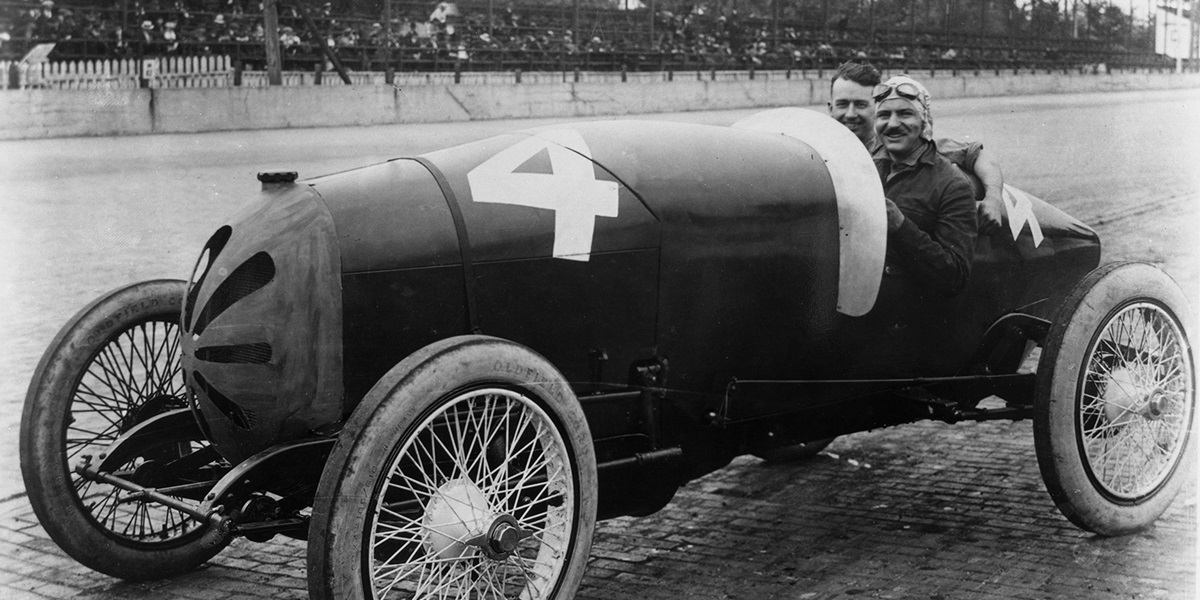
Firestone Tires Went The Distance at Indy for Winner Chevrolet in 1920
February 21, 2020 | By Zach Horrall, Indianapolis Motor Speedway
In the early days of the Indianapolis 500 presented by Gainbridge, then known as the International 500-Mile Sweepstakes, the race was used as a proving ground for automotive innovation.
Each year, those in the automotive industry would show up in Indianapolis and test what they had been working on all year: engines, chassis, shock absorbers and much more.
In the race’s early days, Firestone Tire & Rubber Company used the 500-mile test to see how strong of a tire it could produce for its consumers. Durability on the tough surface was key.
“To begin with, the Indianapolis 500 was not a sport of drivers, it was automobile companies,” said Indianapolis Motor Speedway historian Donald Davidson. “The idea was that the track was built as a proving ground for private testing, but when they had automobile races it was an extension of testing. In the very early days, the credit went to the company, not the drivers. The drivers were an afterthought.”
The idea was that if it worked in the grueling 500-mile race, then it would work on everyday roads and was something companies or manufacturers could sell to consumers.
Back then, roads were tough on tires, and the Indianapolis Motor Speedway was no exception. The 2.5-mile course did not have the smooth asphalt surface race fans see today. It was paved entirely with brick and mortar and was not a place for unreliable tires.
One hundred years ago, Firestone produced an extremely durable tire under one of its brands, called Oldfields, that lasted from start to finish.
That year, Gaston Chevrolet completed all grueling 500 miles in under six hours, averaged 88.619 MPH and won the Indianapolis 500 without ever changing tires.
This was a first at Indy. No one in the seven previous races had won the race without changing tires.
“It was very notable that the car could go 500 miles and average around 88 mph,” Davidson said. “But certainly, the fact that they never changed tires, that was bragging rights for the tire company.”
Gaston was the younger brother of Louis and Arthur Chevrolet, the namesake of the Chevrolet automobile line with which they no longer had an association by 1920. The two brothers were engineers who poured their hearts into the innovative nature of the Indianapolis Motor Speedway.
Louis and Arthur designed and built race cars, called Frontenac’s, specifically to compete at Indianapolis, and they were a part of Gaston’s win 100 years ago. Gaston’s car was entered in the race as a “Monroe Special.”
In just his second Indianapolis 500 start, Chevrolet led the final 14 laps in his Frontenac after Ralph de Palma had a mechanical failure late in the race and handed the lead over to Chevrolet.
The impressive feat by Firestone to cement a car and driver in Indianapolis history on a single set of tires turned out to be a rare feat to come by. It took 44 years for this feat to be accomplished again, when A.J. Foyt drove into Victory Lane in 1964 on the same set of Firestone tires with which he took the green flag.